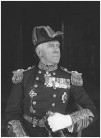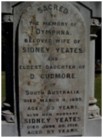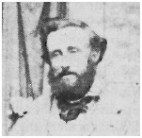YEATES Daniel Henry Cashel (Harry)
-
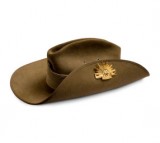
- 2248
- Private
- As part of '2nd LH Brigade'
- Australian Remount Unit 2 - Squadron 8
- Beerburrum Soldier Settlement
- Yes
- 16 April 1867
- Yongala, South Australia
- 2 November 1915
- HMAT RMS Orantes
- 10 November 1915
- Sydney, NSW
-
Daniel, along with his brother Charles Bryson Yeates 2256 from Bowen were both enlisted in Australian Remount Unit 2, Squadron 8, and embarked per HMAT RMS Orontes on 10 November 1915 for duty overseas. There is very little information in his service record so I have inserted some articles that show what the Remount Unit’s history was all about, and what his duties would entailed.
NEW AUSTRALIAN FORCE. A REMOUNT UNIT. PREFERENCE TO SKILLED HORSEMEN.
At present a large number of trained men of the Australian Imperial Force are employed in caring for the Australian horses now in Egypt, and in order to relieve these men for service in the firing line, as well as to make the Australian force as complete and self-supporting as possible, the Government recently communicated with the Imperial authorities, offering to organize and equip an Australian remount unit for service in Egypt.
The Minister of Defence (Senator Pearce) on Monday announced that a cable gram had now been received from the Secretary of State for the Colonies, intimating that the army council had grate fully accepted the generous offer.
The unit, which, will be organized at once, will comprise 2 head quarters and 8 squadrons, consisting of 40 officers and 1606 non-commissioned officers and men. As this unit will be required for the purpose of attending to horses, it is considered that many men desirous of serving the nation, who are beyond the age laid down for. other units, would be suitable for remount work. It has therefore been decided that applications will be received from men up to 50 years of age who are good horsemen, and possess a thorough knowledge of the care and management of horses. The conditions of service as regards pay, &c., will be the same as prescribed for Light Horse units of the Australian Imperial Force.
The Minister of Defense, in making the announcement, added,that further particulars would be made available as soon as possible.
The new unit, in all probability, will be representative of the whole of the Commonwealth, each State contributing details in proportion to its population. In selecting the rank and file preference will be given to skilled horsemen. The troop will not be required to undergo a long course of military training, horsemanship being more essential than an advanced knowledge of drill. It is proposed, however, to give the men a course of lessons in veterinary surgery prior to their departure for Egypt. As far as is known at present the unit will not be required to go near the firing line, and the details will be unarmed.
There are over 28,000 Australian horses in Egypt, and, in addition to taking charge of these animals, the remount unit may be entrusted with, the care of the horses brought over by the British and French Expeditionary Forces. The men, therefore, will find their time fully occupied once they assume duty at the Egyptian base.
September 19th,1915 Newspaper Article.
We need to manage the large number of horses left out of battle from the then seemingly endless Gallipoli campaign led to the raising and dispatch from Australia of No’s 1 and 2 Remount Units, each of four squadrons, which arrived in Egypt in December 1915 and opened two depots at Maadi. However the British base command had already begun to form an Egyptian remount system as a means of economizing on both cost and military manpower, so these units were reduced and consolidated into Aust Remount Section of four squadrons in March 1916 as part of the AIF reorganization and dispersal to the Western Front; it was further reduced to two squadrons in September and renamed Aust Remount Depot. The Depot was established at Kantara but moved to Moascar in August 1917 and an Advanced Remount Section subsequently followed operations to Ludd The work of the unit is adequately summarised by one of the squadron commanders Maj A.B.Paterson.
We had fifty thousand horses and about ten thousand mules through the depot, in lots of a couple of thousand at a time. All these horses and mules had to be fed three times and watered twice every day; groomed thoroughly; the manure carted away and burnt, and each animal had to be exercised every day, including Sundays and holidays. His Majesty's Methusaliers had a perpetual motion job.
10th November, 1916 - Daniel returned to Australia per HT “Vestalia:”via Suez. While his brother Charles returned 21st November,1916.General Information:
Description
Age 48yrs 7 mths
Address – Mort St. Toowoomba / box 79 Toowoomba
5ft 8in – 145lbs
Complexion Dark – Eyes Blue - Hair Grey
Religion C of E
Occupation – Horse Trainer / commercial Traveller
Single
Daniel was born in 1867 at Yongala, SA
Died in Brisbane on 20 August 1954, aged 87.
Cremated at Mt Thompson Crematorium on 23rd August 1954.
He was the six child of Sydney Van Butchell Yeates (b New Cross, Ken, England on 30 Aug 1831 and d 1918 aged 87) and Dymphna Maria Cudmore (b 1837 Georgetown, Tas and d.1899 Qld aged 62)
Children / Siblings:
Sidney James Yeates b. 1858 Frome SA - d. 1899 Charleville Qld - 41 yr
Florence Barr Yeates b. 1859 Frome SA - d. 1910 Toowoomba Qld - 51 yr
Albert Yeates b. 1860 Frome - d. 1941 - 81 yr
Edwin Percy Yates b. 1862 - d. 1946 - 84 yr
Mary Dynphna Yeates b. 1865 Adelaide SA - d. 1901 - 36 yr
Daniel Henry Yeates b. 1867 Yongala SA - d.1954 - 87 yr
Walter Cudmore Yeates b. 1869 - d. 1953 - 84 yr
Charles Bryson Yeates b. 1871 - d. 1924 - 53 yr
Alfred Miles Yeates b. 1872 - d.1919 - 47 yr
Gilbert De Yeates b. 1874 - d. 1945 - 71 yr
Kenneth Barr Yeates b. 1876 - d. 1939 - 63 yr
Herbert Yeates b. 1879 - d. 1945 - 66 yrNOTE OF SPECIAL INTEREST:
Daniel’s sister Mary Married 1893 Ernest Francis De Clair
DE CHAIR -YEATES.-On the 18th February, 1893 at St. John's Pro-cathedral, Brisbane, by the Rev. Stone Wigg, Ernest Francis, second son of Dudley Raikes De Chair, of Shepherdswell, Dover, Kent, England, to Mary Dymphna, second daughter of Sidney Yeates, Boondoon station, Warrego districtDE CHAIR.- On the 24th February, at Fulham, London, after a brief illness, Mary Dymphna, wife of Ernest De Chair, and second daughter of Sidney Yeates, now of Beenleigh, Queensland, and formerly of South Australia.
DE CHAIR.-On the 24th February, at 52 St. Clement's Mansions, Fulham, London, Mary Dymphna, beloved wife of Ernest Francis De Chair, and second daughter of Sidney Yeates, aged 36 years.
DE CHAIR-On the 23rd July, 1902 at Montreal, Canada, of heart failure, Ernest Francis, second son of the late Dudley Raikes De Chair, of 87 Cadogan Gardens, London
Ernest Francis de Chair – b. 1866 Lenoxville Canada d. 23rd July,1902 – Montreal, Canada He was the brother of Admiral Sir Dudley Rawson Stratford De Chair KCB,KCMB, KBE,KCMG,MVO - b.30th August 1864 – d.17 August,1958 who was a senior Royal Navy Officer and later 25th Governor of NSW
Daniel must have been a very unobtrusive man, I found very little information on him,apart from the fact he lived in the Wide Bay district for many years.
The following extract details the Life of Daniels Family:
EARLY SETTLEMENT OF NORTH AND WESTERN QUEENSLAND: ONE FAMILY'S EXPERIENCES by Neil Yeates ( Read at a Meeting of the Society at Newstead, Brisbane, 23 April 1981.)(S.A.).
Emeritus Professor Neil Yeates retired from the University of New England, Armidale, in 1977. He lives at Woolgoolga on the mid-north coast of New South Wales, and is President of the Coffs Harbour Historical Society.BOONDOON STATION & ADAVALE (1881-1894) The party which embarked on the 700-mile journey to the Warrego comprised Sidney, his wife Dymphna and 10 of their 12 children, including one daughter, Mary. (The elder girl, Florence, and one boy, Daniel, were then living at Claremont, Glen Osmond, Adelaide with Mr. and Mrs. D. M. P. Cudmore: Daniel to attend school and Florence as Mrs. Cudmore's companion. The diary^^ which Flora Yeates kept for the Cudmore's during her four years and 10 months' stay gives great insight into the Adelaide life of that period, a century ago).
Transportation to Boondoon included covered wagons and a total of 24 working bullocks. The two eldest boys, Sidney James (22) and Albert (20) drove a bullock team each, while the sheep, numbering 1200, were in the care of Edwin (18) and Walter (11), assisted by a good sheep dog named Hansom. Edwin rode a saddle horse but Walter walked most of the way - only sometimes riding on a pack horse on top of the swags. It is presumed that the younger children rode in a wagon with Dymphna and that Mary (15) helped her mother to manage them. They were: Charles (9), Alfred (8), Gilbert (6), Kenneth (4) and Herbert (1).
When camp was made each evening the children slept in the wagons, while Dymphna and Sidney occupied a 10 x 12 tent in which they arranged a mattress and bedding. They also carried sheet iron as an added protection in case of extremely wet weather. They were never short of milk on the journey as "a milk cow travelled with them.
The route taken was via Withersfield, the Drummond Range and Alpha station to Tambo; thence south-west through Minnie Downs and Listowel Downs to Blackwater Creek. They followed the latter to within 12 miles of Adavale, then struck east about seven miles to Boondoon homestead, where they arrived on 2 February 1881. The journey had taken 110 days, hence they averaged just over six miles a day. Unfortunately Boondoon was then in the grip of drought and one early requirement was to cart water three miles from a permanent rock hole to the homestead on Brigalow Creek.
The consolidated run known as Boondoon, on which Sidney and his family settled in 1881 totaled 553 sq.m. and comprised the two adjoining leases of Boondoon in the south and Mentone in the north. The price paid for the run was £10,000, with 3000 cattle included; but there were practically no fences. The new partnership traded as Cudmore, Yeates & Co., with the leases being in the Cudmore name and Sidney Yeates being resident partner-manager.'
After a brief settling-in period, Sidney and his older sons "converted the station into a sheep run and set to work fencing." The latter involved felling swathes of the abundant timber, mostly mulga and gidyea, in long straight runs down the whole length of each fence line.
This was all done with the axe. Then, as work progressed, the fallen scrub was laid tree on tree in parallel, to make a thick brush type fence quite impassable by sheep. Because of the durability of the wood, many of those old fences remain - weathered, burnt and decaying, but clearly identifiable after 100 years. Even where fires have burnt the wood, the line of the fence is recognizable by the mound of ash and earth remaining.
And from the air, whether the fence has been burnt or not, the fence lines are identifiable by the changed pattern of vegetation along the track of the long felled scrub. The pattern so defined conforms closely to the boundary shown on the Lands Department map of the property, following the first survey of the area in February 1884 using "theodolite and perambulator."
Since no one is believed to have run sheep on Boondoon before or after the Yeates' occupation, it must be presumed that the sheep facilities were installed by them. Present day relics around the woolshed area testify to the work which went into erecting the buildings and transporting the heavy machinery. For example, in the windblown, red sandy soil there stands a huge iron wool dumper with the maker's name on its side: H H. Mortimer & Co, London & Birming148 ham. Beside it lies a heavy iron winding device, and nearby are piles of old hand shears, iron rings from the hubs of wagon wheels, parts of camp ovens and the like. A large stone fire-place or oven marks the site of what was probably the shearers' bakehouse, and the rammed stone and clay floors of the wool-shed and shearers' quarters are still clearly definable. These relics and the ground dimensions of the former buildings, taken in conjunction with Boondoon's stocking capacity are in keeping with the sheep numbers having been "up to 45,000" in the later years of the Yeates' occupancy.
Valuation for rental re-assessment was carried out in 1886 and the improvements in the wool-shed area were relatively high: double those of the head station house and yards. An out-station dwelling house, kitchen, store and stockyard were also listed, plus another outstation hut and yards; otherwise the improvements to that date consisted mostly of watering facilities (tanks and dams) and fencing. Included within the woolshed precincts were a wool scouring shed, engine shed and a fenced drying ground "' which indicates that the Yeates washed their sheep (in Boondoon Creek) and, if necessary, scoured the shorn wool too. The latter is supported by family notes stating that Walter Yeates "often drove the steam engine to dry the wool," this being achieved centrifugally, much like with a modern spin-drier.'
In addition to the station's work program, the education of the younger children had to be organized. This involved appointing a governess and, despite the isolation, there seems to have been little difficulty in finding good governesses over the years. Certainly all the children received excellent educations and learnt how to conduct themselves. This says much, not only for the governesses, but for Sidney and Dymphna's insistence on good behavior. Because of the latter it seems that Dymphna was known in certain quarters as "the Duchess".' And of Sidney it has been written that: with his large family of ten sons on the station at Boondoon, he saw to it that in the home, the courtesies and refinements in which he had been reared should be preserved. "Go out to the mulga" he would say, the unfailing remedy for noise inside . .. Each Sunday on Boondoon, Sidney Yeates held a short religious service for the family and the station employees. Everyone dressed in their best clothes for this, the ladies in white. The service was held before the mid-day meal which was always a rather special one.
In due course Sidney Yeates turned his thoughts once more to community affairs. He was sworn in as a Justice of the Peace on 4 April 1884 and for the next 10 years he discharged "the onerous duties of court work at great personal inconvenience."'* The Adavale police reports of 1881-91 (Qld. Archives) show both the need for such help Richard Yeates, great-grandson of Sidney Yeates, stands beside fire-place ruins at old hut on Boondoon. Note the deep slots in the gidyea posts, into which the tapered ends of the horizontally laid slabs fitted. and the variety of cases on which the bench of justices had to deliberate. During the 1880's and early 1890's there were many serious industrial disturbances among the shearers in the Warrego district. Strikes and picketing of some stations occurred, but there were few cases of violence. Milo station, which adjoined Boondoon on the west, came in for much trouble of this type but Boondoon was not affected. It is said that Sidney Yeates had good relations with the shearers. On 25 July 1884 the Adavale police officer made application for more police to help with the Milo shearers' strike." Then much later, 30 April 1891, but again during a serious industrial confrontation, an injury to troop horse Rattler was reported "whilst Tracker Charlie was riding him through the bush tracking offenders who had set fire to Gumbardo woolshed". (Gumbardo adjoined Boondoon to the south). By no means all the troubles were due to industrial disputes. On 26 August 1887 the police went with Milo's manager, Mr. Pegler, to paddock No. 1 where they "found certain men [one] alias 'Terrible Billy' in possession of a mob of horses that had faked brands . . ." Terrible Billy was arrested and an accomplice was served with a summons. A mere two days later Constable Jackson investigated a light 150 at the rear of the Imperial Hotel, Adavale at 12.30 o'clock a.m. and "saw drinks supplied". Constable Jackson was "clutched by the throat with one hand by [name given] and struck a severe blow in the eye with the other clenched fist, said fist having a ring on".
Over the years an incredible number and variety of crimes, petty misdemeanors, suicides, discoveries of bodies and strange incidents occurred in Adavale and the surrounding district. It must be remembered that in those days Adavale was a busy centre of trade, a depot for Cobb & Co. and an important junction for the teamsters. The 1886 census gave the town's resident population as 156, and the 1889 Queensland Post Office Directory listed 31 pastoral names (families), the last being "Yeates Brothers, Squatters." The town was recorded as being "613 miles from Brisbane; rail to Charleville, thence coach 130 miles." The coach trip from Charleville to Adavale and Boondoon necessitated crossing the Ward and Langlo Rivers.
A particularly informative article about Adavale, its district and the hospitality of the people as they were in 1891 was written by a traveler at that time.^' A brief extract follows:
At Adavale we met some very fine people, whom it is a pleasure to remember: A. H Pegler of Milo; E. B. Learmonth of Gumbardo; the Yeates family of Boondoon; some of the Tullys of Ray station; Charles McLean of Collongin; Duncan McNeill then the Shire Clerk; Alford who was at Pinkilla. In the town there were Mr. & Mrs. Dare at the Post & Telegraph office; T Skinner, a storekeeper; Charles Fitzwalter of the big Western firm; Stewart Gibson who loved a good horse . . . Woodhatch of the principal hotel; and Taylor of the Blackwater Hotel. The Adavale folk were a fine, hospitable lot; and appreciation of the happy days at Milo, Gumbardo and Boondoon are still with me .. . the gig shearers' strike was on . Sidney Yeates always welcomed visitors, and an unusual one in the early 1890's was a young Royal Naval lieutenant, Ernest de Chair. The chances are that he met some of the family in Adelaide and that they suggested a trip to Boondoon, the customary route being by paddle steamer up the Murray and Darling to Bourke, thence by coach to Adavale. While Ernest de Chair was at Boondoon the younger Yeates girl, Mary, returned from a lengthy absence, and on the night she arrived at Boondoon there was a great welcome for her. The bachelors all rallied from their quarters in the long room of the house, and she saw, on entering, a young Navy officer who was looking at her intently. Like a flash she knew why she had come back In fact, Mary Dymphna Yeates and Ernest DE Chair were married in 1893. Years later, a brother of the groom. Admiral Sir Dudley DE Chair, became Governor of New South Wales (from 1923 to 1930). In a chronicle such as this, attention should be drawn to the pioneering spirit of Sidney Yeates' wife, Dymphna, who was at his side in the bush for so many years. She bore 12 children and reared them all to adulthood, sharing the isolation and loneliness in the Flinders Ranges, the trying tropical climate in North Queensland and the heat and drought of Boondoon's stony mulga ridges. Besides managing a large and busy household and making "splendid butter,"' she could also take charge of station affairs when need arose. At one time on Boondoon, Dymphna became critically ill from what proved to be a bowel obstruction. Walter Yeates rode at top speed to Adavale where there was then a medical man. Following Walter's entreaties he agreed to ride back to the station, where he operated on Dymphna, with Walter as anesthetist.
Flora Yeates was a great help to her mother at Boondoon. One of her tasks was to supervise the big household clothes wash, for which she received assistance from willing Aboriginal women and girls. These Aboriginal women thought a great deal of Flora, and numerous female pica ninnies born on the station were named after her by their mothers.
There was an Aboriginal camp on Boondoon and some of the men worked as stockmen with Sidney, who always got on well with them. However, they were liable to disappear on a walkabout "without a minute's notice".' Arrangements of stones, including several circles on an extensive ceremonial site some distance from the head station, are still in place to-day; and underlying the area are said to be limestone caves with good water.IMPRESS ON A YOUNG LIFE
It now remains to record the impressions which Boondoon left on a boy who grew up there in the 1880's-90's. Herbert Yeates was barely two years old when the family settled on the station and about 15 when they left. Thirty-five years later he described to the writer (his youngest son, then also about 15) the excitement he felt when the bullock teams arrived with the station's stores, often at intervals of six months. He recalled, too, how the snakes would come up around the house from the creek on summer nights, sometimes being found in the creepers growing along the verandah. From the time he was 11 he commenced undertaking significant jobs connected with the property, and as a teenager he did boundary riding which occasionally kept him out over-night. Although there were huts on parts of the run which afforded shelter, he recalled the loneliness. He championed the self 152 reliance which bush life inculcated; yet he always strove to alleviate the hardships of others. He revered all that his pioneering parents stood for, and was never happier than when travelling in outback Australia. His stock and station business in Toowoomba kept him close to the land and, later, as a Country Party member of the Queensland Legislature, he worked hard to improve rural conditions - particularly the transport system. He represented East Toowoomba in Parliament from 1938 until he died in December 1945.
The Yeates family left Boondoon in March 1894 after 13 years of hard but generally successful endeavor. There had been a serious drought the previous year - so bad, in fact, that Milo station lost 160,000 sheep. Wild dogs were troublesome and the rabbit pest was becoming established in the district; but none of these problems on their own seems to have accounted for the Yeates' decision to leave.
The only recorded statement is that Sidney "sold his interest [in Boondoon] just in time to avoid the worries of the great drought in the subsequent years."
On retirement to Toowoomba, Sidney and Dymphna Yeates named their cottage "Mambray" in memory of their first home site on Mambray Creek, Baroota run, in South Australia. Sidney died in 1918, aged 86, 19 years after his wife. Their joint tombstone in Toowoomba cemetery bears the words: How long we live, not years, but actions tell; The man lives twice, who lives the first life well.
Boondoon to-day presents a very different scene from that of a hundred years ago. Nobody now lives on the property. It is run from Acton, far to the north, and a helicopter is used to muster cattle. Although a northern section has been cleared of gidyea scrub and sown to buffalo grass, the loneliness of the stony ridges and the desolation of hut ruins and old stockyards strike a sad note - certainly for a Yeates.
Instead of the bustle of a large family and their employees, plus the movement of Aborigines, Boondoon is now silent, still, eerie. Once thriving Adavale, too, is practically deserted. The question then arises: did the pioneers misjudge? This writer thinks not; but rather that their expectations were modest, relative to those of the following generations of graziers. Motor cars, private planes, entertainment, beach holidays, clubs, boarding schools - now taken for granted – demand greater affluence. In some districts, certainly round Adavale, this means larger holdings, far greater capital, increased mechanization, less population and the demise of towns; but is it progress? -

-
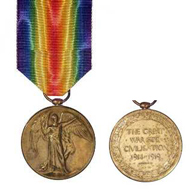
-
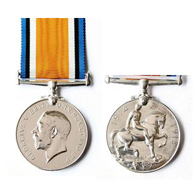
- Returned to Australia
- 18 October 1916 - per HT Vestalia via Suez
- 20 August 1954
- aged 87.
- Cremated at Mt Thompson Crematorium. 23rd August 1954
- Joy Ratcliffe


